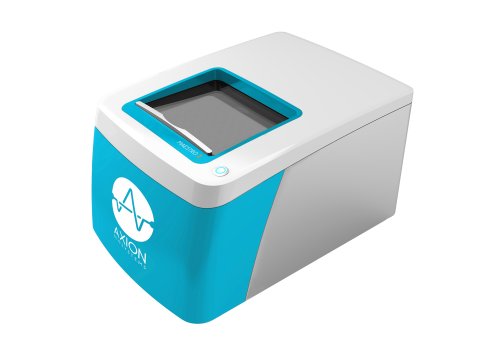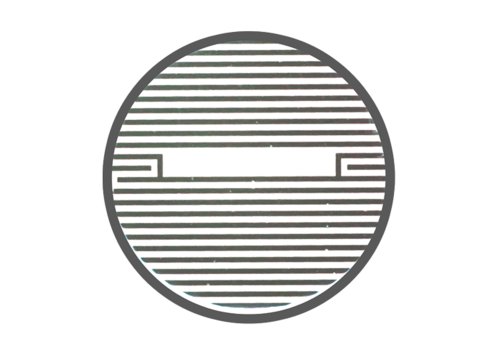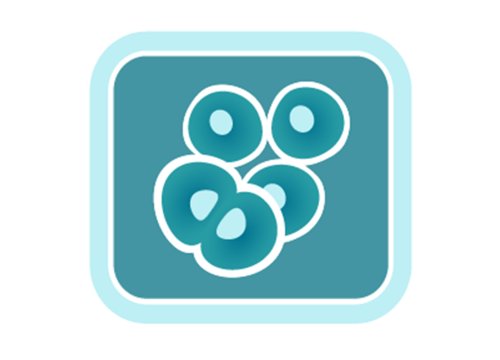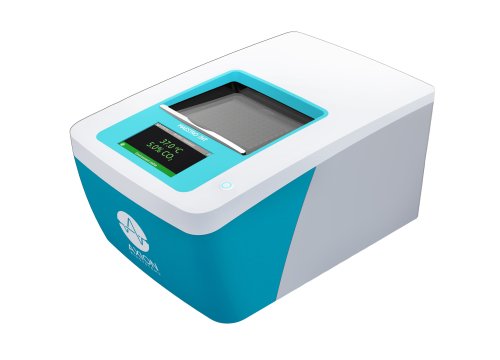What you will learn in this 13 minute webinar:
-
Endothelial cells from different vascular beds respond differently to pro- and anti-inflammatory cytokines, as recorded on the Maestro Z platform.
-
Monocyte-induced endothelial permeability is distinct from cytokine-induced permeability, and there may be patient-specific differences from people living with sickle cell anemia.
-
The Maestro Z system provides an effective platform for monitoring changes to cell barrier permeability, label-free and in real-time.
Summary:
In a patient with Sickle Cell Anemia, you can have altered endothelial cell permeability due to the chronic inflammation of the cells that line the blood vessel wall and control transportation. In this webinar, Manu Platt, PhD (Georgia Institute of Technology) discusses how he evaluated the difference in vascular wall permeability in control and sickle cell disease models as recorded on the Maestro live-cell analysis system.
About the presenter:

Dr. Manu Platt received his B.S. in Biology from Morehouse College and Ph.D. from the Georgia Tech and Emory joint program in biomedical engineering. After postdoctoral training at MIT, he returned to Georgia Tech/Emory in the joint department of Biomedical Engineering in 2009, and is now a full Professor and Associate Chair for Graduate Studies. His current research centers on pediatric strokes in sickle cell disease and personalized and predictive medicine for breast cancer. His work has been funded by NIH Director’s New Innovator Award, International AIDS Society, Georgia Cancer Coalition, and the National Science Foundation. Integrated with his research program are his mentoring goals of changing the look of the next generation of scientists and engineers to include all colors, genders, and backgrounds through Project ENGAGES and the NIBIB funded GT-ESTEEMED.
Transcript of webinar:
Thank you for joining for today's coffee break webinar. Today's topic is Sickle Cell Disease Inflammation and Endothelial Permeability. Sickle Cell Disease is a group of inherited red blood cell disorders that affects an estimated seventy thousand to one hundred thousand Americans a year. When a person is born with Sickle Cell Disease the red blood cells contort into a sickle shape. The sickle cells then can get stuck in small blood vessels and die early causing red blood cell shortages and a decrease in blood flow resulting in pain and other complications. One of the greatest risks of sickle cell disease is the probability of stroke. In fact 11 percent of patients with the disease will suffer a stroke before the age of 20. In today's webinar, Dr Manu Platt and his lab at the Georgia Institute of Technology, investigates the mechanisms of vascular permeability in response to sickle cell induced inflammation.
Dr Manu Platt received his Ph.D. from Georgia Tech and Emory in Biomedical Engineering. After completing his post-doc from MIT, he returned to Georgia Tech and Emory as an Associate Chair of Graduate Studies in Biomedical Engineering. His work currently focuses on disease modeling to find cures to pediatric strokes caused by sickle cell anemia and to refine predictive medicine for breast cancer. Dr Platt is also the co-director of Project ENGAGES, which is a program that pays for African American high schoolers in the Atlanta Public School System to pursue research at Georgia Tech. Hello, I'm Dr Manu Platt from the Department of Biomedical Engineering that is joint between Georgia Institute of Technology and Emory University and I'm happy today to talk to you a little bit about sickle cell anemia and mechanisms of inflammation-mediated vascular permeability.
Sickle cell disease is a homozygous recessive disease and it's a mutation in the beta-globin S monomer of hemoglobin. Hemoglobin is actually made of it's a tetramer formed of two alpha globin gene or proteins and two beta globin proteins and so when those two come together from that tetramer there can be two mutations in the beta globin S that causes the sickle cell phenomena. So what happens is actually a glutamic acid is mutated and is replaced by a valine which is hydrophobic, such that when the hemoglobin gives off oxygen um it exposes that hydrophobic veiling to the surface which is not thermodynamically favorable so the hemoglobin monomers self-assemble to form that really stiff sickle cell polymer sickle hemoglobin polymer that completely deforms the red blood cell and as you can imagine the red cell's job is to give off oxygen intake on carbon dioxide in the different tissues and so the sickling and this melting of the sickle polymer continues to happen as red blood cells move throughout the circulation. You can see this in this image of blood from a person with sickle cell we took in our lab that we put in our hypoxia chamber and you can see the cell sickle and then when we allow the oxygen to return then they reassume their natural shape. But there's a massive problem with sickle cell beyond just the deformation of the red blood cells soon they can end up lysing or breaking open and that releases all of these inflammatory factors from inside of the red blood cells into the circulation and the plasma in the milieu. Um the the actual heme group that's a part of the hemoglobin actually helps to generate reactive oxygen species, there's chronic damage, immune cell activation, and one of the other problems that it increases the permeability of endothelial cells. The cells that line the blood vessel wall and control transport due to this chronic inflammation of sickle cell you can have this altered endothelial cell permeability.
While many studies sickle cell disease in the deoxygenated microcirculation there are major complications in the largest oxygenated arteries. Major one is stroke. Children at sickles with sickle cell disease are increased risk of stroke with 11 percent having a major stroke or paralytic stroke by age 20, but up to 33 percent of these children will have what we call a silent stroke, which is a stroke in a cognitive or thinking part of the brain, and you can see in here this magnetic resonance angiogram shows the constriction in the artery, cerebral artery which now that whole part of that brain is no longer receiving oxygen. Sadly the greatest age risk is between the ages of two and five years old and so there's a lot of mechanisms to be understood downstream of this chronic inflammation. And so these are questions that my lab likes to test. And so the first thing we know is that there's increased monocytes, these circulating white blood cells, because of the chronic damage of sickle cell, and we showed early on that um while others had shown this before us but we confirmed in our own hands that when you have AA PBMCs, that's wild type, and they stick to endothelial cells, again the cells that line the blood vessel wall, you see the AA PBMCs not a lot can stick but with this inflammatory cytokine TNF alpha, it promotes adhesion of the peripheral blood mononuclear cells but when we use peripheral blood mononuclear cells from a person with sickle cell disease, where they've been in that chronic inflammatory environment, a greater number of them will adhere, but they also will turn up these proteolytic pathways. You can see in that figure below with the zymograms showing increased expression of cathepsin K and cathepsin V and all that goes because there's increased amount of serum levels of TNF alpha circulating in these patients. And so having shown that there's greater expression of these proteases these proteases can also affect the integrity of the vascular wall and so the next question was what are the sickle cell mediated inflammatory effects on endothelial cell permeability and this really became important as to look in two different types of endothelial cells. In the large diameter of the carotid artery again where the blood is coming in um to the brain those are much larger vessels so it's a larger diameter endothelial, a larger diameter vessel, which leads to endothelial cells from a different flow environment, but in the microvascular cerebral arteries, where again the blood keeps branching and branching and branching, um they also may be exposed to a different flow environment and the endothelial cells there may also be have different responses to these inflammatory cytokines. So we wanted to look in these two types of endothelial cells and see what are the roles of inflammatory cytokines on endothelial cell permeability? Can anti-inflammatory cytokines help? and is their increased permeability of these endothelial cell beds with the monocytes that we know are up regulated in people with sickle cell. And again all together what are the differences between the large artery versus the microvascular artery endothelial cells do and how do they contribute to strokes or can they be used to indicate patient susceptibility to strokes so we can get it why some patients are at greater risk than others. And so we turn to the Maestro because the Maestro we know we can seed cells and it has this great feature where we can actually measure permeability or barrier function by looking at measuring the impedance between the cells with the fantastic technology that it uses at the low frequency levels and so we actually cultured confluent monolayers of human aortic endothelial cells, which are large artery endothelial cells, or separately cultured human brain microvascular endothelial cells on the Maestro and then measure changes in impedance when we would stimulate them with different cytokines and again we went back to studying TNF alpha, the inflammatory cytokine I showed in our previous data, where we wanted to our hypothesis was that increase of TNF alpha would increase endothelial cell permeability and you can see in the large artery endothelial cells they HEAC um after adding TNF alpha we did see reduced impedance, meaning increased permeability and then our question was can a protective cytokine such as endopoitin actually be used to return um the permeability back to what it was and it was exciting to see that when we added angiopoietin we were actually able to return it to baseline in the human aortic endothelial cells, or the large artery cells, but in the microvascular cells, we actually the angiopoietin actually was able to increase permeability even beyond baseline showing there was a protective effect with angiopoietin. So to better relate this to the physiological moment of sickle cell we actually isolated plasma from our mouse model of sickle cell disease and SS means that the mice have the genetic mutations that are homozygous for sickle cell anemia or AS are the littermaid controls the heterozygous condition and this is actually a surprising result. What we found is that from the plasma from the SS animals there actually was reduced permeability as you can see from an increase in the impedance with the SS plasma so showing that um the SS is actually inducing endothelial cells to kind of tighten their junctions compared to what we found with their littermate controls and we also do see a slight difference between the large artery and the microvascular endothelial cells. So that was our test with just the plasma but as you remember I said that monocytes also play an important role and they're elevated in people with sickle cell because of the chronic inflammation so we want to see what was the separate role of monocytes separate from the plasma and when we um incubated monocytes after we either stimulated with TNF alpha that inflammatory cytokine which we knew increased permeability as shown by a uh drop in impedance as measured from the Maestro what we also saw was that the monocytes and TNF alpha decreased it together. That's in the large artery endothelial cells but the difference we saw with the micro vascular endothelial cells was quite interesting and that you can see that the monocytes um had a lower or they did reduce the impedance meaning there's increased permeability but you can see TNF alpha and the TNF and monocytes alone had a much more differential effect in microvascular endothelial cells suggesting that what we may be seeing in the major arteries maybe having a very different phenotype as those branches in the cerebral artery tree break off more and more and more where we might start to see complications that could lead to stroke in these individuals. So to summarize what we've shown you these endothelial cells from different vascular beds respond differently to the pro- and anti-inflammatory cytokines and this may produce clues for sickle cell mediated responses in the cerebral arteries versus other arteries that are way more accessible that you can run more experiments on but something different might be happening that cerebral vasculature. It also shows that this combination of the cytokines impact on endothelial cell permeability responses they need to be parsed and when compared to plasma could provide insight into patient-specific milieus and those differential effects. Remember there's some percentage of patients that are at greatest risk for strokes and others are protected so there may be some patient-specific cues and how those are being reflected in endothelial cell permeability and then finally we show that the monocyte-induced endothelial permeability was quite distinct from the cytokine induced permeability and again there may be patient-specific differences with people living with sickle cell anemia that then we could address and may lead to some patient tailored therapies or biomarkers that can be looked at individually and as we move forward what's exciting about this is that the Maestro has been able to tell us what the differences are in that impedance measurement under a variety of conditions that now we can actually go back and use our animal model of sickle cell disease to test and then to inform more potential therapies that might be able to um control endothelial cell permeability with the different types of arteries in which those cells may be found.
And again the hopes of what we found from just the in vitro studies with the Maestro could be used for us to evaluate cytokine inhibition in vivo by actually doing an injection of certain cytokines or certain anti-inflammatory cytokines and then going back and investigating those different vascular beds. Will it be different in the carotid artery versus what we see in the cerebral arteries? Hopefully the data from the Maestro will help inform that and there are so many vascular beds that are in different tissues and different structures throughout the body that sickle cell disease impacts remember those red blood cells go everywhere and they must give off oxygen in all of those different capillary beds and because there's so much dysfunction in sickle cell disease based on the organ type then there's lots of room for us to find new answers and how endothelial permeability or impedance could be affected so I encourage everyone bring what you study into the field of sickle cell disease. And that is the conclusion for today's Coffee Break Webinar. If you have any questions you would like to ask regarding the research presented or if you are interested in presenting your own research with microelectrode array technology or impedance-based assays please forward them to coffeebreak@axionbio.com. For questions submitted for Dr Manu Platt, he will be in touch with you shortly. Thank you for joining in on today's Coffee Break Webinar and we look forward to seeing you again.



